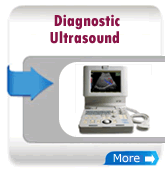Cryosurgery
Lam Family Foot Care is pleased to introduce foot cryosurgery, a new minimally-invasive procedure for the management of Plantar Fasciitis/Heel Spur Syndrome, Neuromas, Achilles Tendonitis, and certain other foot conditions. Cryosurgery is a painless and safe in-office procedure utilizing controlled cooling temperatures to eliminate painful conditions by freezing the nerves to the area of pain. We are excited about this new technology and are hopeful it will become an enhancement in the treatment of our patients.
Foot Cryosurgery Indications
- Chronic Heel Pain
- Planar fasciitis/Heel Spur Syndrome pain
- Morton's neuromas
- Plantar fibromas
- Neurofibromas
- Achilles Tendonitis
Advantages to Foot Cryosurgery
- Painless under local anesthesia
- Minimally invasive treatment
- Fast in-office procedure
- Ambulatory the day of the procedure
- Minimal to no down time from work or activity
- Bypass prolonged use of pain medications that may otherwise create other systemic complication
- Effective long-term pain relief
Cryoanalgesia has been known to decrease pain and inflammation for centuries. Physicians, physical therapists and sports trainers have relied on ice therapy to address many musculoskeletal conditions and injuries in particular, during the early inflammatory phase. Not only do lowered temperatures result in vasoconstriction of blood vessels, thus reducing inflammation, but also create an anesthetic effect by altering nerve function.
Historically, researchers performing cryosurgery observed that extreme freezing had an anesthetic effect beyond the temporary relief produced by simple cooling. Over the last thirty years, many modalities have been introduced to address chronic pain by surgeons, pain management specialists, and neurosurgeons. These techniques have had a common goal of producing prolonged nerve blocks to relieve intractable pain. Within the last ten years, cryosurgery has been utilized to relieve trigeminal nerve pain, lumbosacral pain and most recently carpal tunnel syndrome.
It is with great excitement that in late 2003, the vision and work of Lawrence M. Fallat, DPM, FACFAS demonstrated that cryosurgery had a place in podiatric medicine to treat several foot and ankle conditions. Early studies indicate cryosurgery to be a safe and effective modality in treating foot neuromas, plantar fasciitis (heel pain/heel spur syndrome) and recalcitrant nerve pain.
Principles of Cryoanalgesia
Cryosurgery is a treatment modality that utilizes controlled cooling to destroy pathological tissues. Cooling is accomplished via the expansion of highly pressurized and compressed gas (nitrous oxide) through a cryoprobe. Cryoanalgesia, (also known as cryoneurolysis or cryoneuroablation) involves the destruction of the pathological nerve cell by freezing intracellular elements leading to nerve cell death. The surrounding soft tissue (epineurium, perineurium) of the nerve fiber remains intact allowing for subsequent nerve regeneration. This differentiates cryolesions from other neurolytic lesions that destroy the surrounding soft tissue that ultimately may result in scar tissue or neuroma formation.
The Cryosurgery Procedure
The cryosurgery procedure for foot problems is a simple office procedure that lasts from 15 to 30 minutes. It is elegant in it's simplicity and effectiveness. No special preparation is required prior to the procedure and afterwards patients are able to walk and resume normal activities, other than sports, immediately. Because of the numbing effect of the ice therapy, no special anesthesia is required (just local anesthesia block in the office) and as such, the procedure is comfortably performed in the office.
We perform the procedure in our minor surgery suite. First, the area of pain is mapped on the skin. The area is given local anesthesia and is prepared as in any other surgical procedure. A very small incision is made and the cryoprobe is introduced beneath the skin. The incision is so small that no sutures are required. The probe is brought to the location desired and confirmed with ultrasound image. The tissue within approximately an 8mm diameter is frozen. Two 3 minute freezing sessions are made with a 30 second thaw between. A light dressing is applied and the patient is immediately able to walk out. Post-operative pain medication is not usually prescribed.
It should also be noted that no treatment, including cryosurgery should be considered to be 100% successful. However, this approach does have a high success rate (80-90%) with very little potential for risk or side effects. Rarely, patients have a temporary increase in symptoms, similar to other surgical procedures. Additionally, on occasion the area of pain extends beyond the area of freeze so that a second cryosurgery treatment may be needed later.


|






